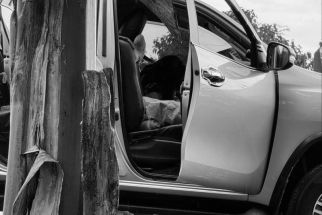EU provides P103.5-M for biodiversity research in Asia
September 11, 2002 | 12:00am
LOS BAÑOS, Laguna – Thirty-seven research projects on biological diversity are now being conducted in seven Southeast Asian countries, including the Philippines.
Funded by the European Union (EU) in the amount of P2.299 million euro (about P103.5 million), the research projects are being undertaken under the auspices of the Los Baños-based ASEAN Regional Center for Biodiversity Conservation (ARCBC).
ARCBC is a joint project of the EU and the Association of Southeast Asian Nations (ASEAN) launched in 1999 to intensify biodiversity conservation efforts in Southeast Asia.
Its executing agency is the Department of Environment and Natural Resources (DENR), with Dr. John MacKinnon and Gregorio Texon as co-directors for EU and ASEAN, respectively.
Of the 37 research projects, four are being implemented in the Philippines by as many agencies – DENR-Ecosystems Research and Development Bureau (ERDB) in Los Baños; University of the Philippines Marine Science Institute (UPMSI) in Diliman, Quezon City; Silliman University Angelo King Center for Research and Environmental Management (SUAKCREM) in Dumaguete City; and Bioresource Conservation Trust for the Philippines, Inc. (BCTPI) in Pandan, Antique.
The projects in the Philippines and their implementing agencies are: "Resource assessment, economic valuation and identification of alternative livelihood options in the areas within and surrounding the Lamon Bay, Ragay Gulf and Tayabas Bay, Philippines" – DENR-ERDB, with Director Celso Diaz as coordinator.
To be undertaken for four years, the project aims primarily to conduct a resource (marine, terrestrial, and human) assessment within the surrounding areas of Lamon and Tayabas Bays and Ragay Gulf; to identify the marine and terrestrial resources of economic and ecological importance on the surrounding communities of the three sites; and to identify factors affecting changes (positive and negative) on the marine and terrestrial resources.
"Responses of the herpetological and mammalian faunas of Negros Island, Philippines to fragmentation of the tropical rainforest" – SUAKCREM and the Centre for Tropical Conservation Studies, with Dr. Ely L. Alcala as coordinator.
With a two-year timeframe, the research aims to ascertain the population of the threatened species and other frogs, reptiles, and mammals whose conservation status is not known: to assess the quality of the habitats of these species; to institute interventions for the recovery of critically endangered species and for the improvement of their habitats; and to institute programs that will mitigate conflicts between man and wildlife.
"Inventory of scleractinian corals of the Pacific Coast of the Philippines Part I: Eastern Visayas and Northeastern Mindanao" – UPMSI, with Dr. Wilfredo Licuanan as coordinator.
To last for 16 months, the project will undertake an unprecedented inventory of scleractinian corals along the country’s eastern seaboard. In addition, it seeks to develop reference collections both in Manila and regional institutions.
"Ecological assessment, restoration, and protection of the Northwest Panay low-elevation forest ecosystem: Developing community-based agroforestry solutions for natural resources management and biodiversity conservation" – BCTPI, with Dr. Samuel Koffa as project leader.
The three-year project aims primarily to develop, with resource-dependent residents of the Northwest Panay Low-Elevation Forest (NPLF) and its buffer zone, a resource management system that both advances the welfare of the local resource users and furthers protection of this critical natural resource base from a landscape-lifescape perspective.
It will also develop and test essential elements of a workable social contract between buffer zone communities and the non-local stakeholders at the municipal, national, and international levels who are concerned with resource protection.
The other biodiversity research projects are being done in Vietnam (10), Indonesia (9), Thailand (5), Malaysia (4), Singapore (2), Brunei Darussalam (2), and one under ASEAN.
The initial results of the projects were assessed during the two back-to-back ARCBC-organized meetings held recently at the Sulo Hotel in Quezon City.
The conferences were billed "Workshop on Biodiversity Valuation: Approaches and Case Studies" and "Third Research Conference and Fourth Meeting of the Scientific Experts Committee (SEC) of ARCBC."
Both meetings were attended by biodiversity experts from the ARCBC country-participants, a representative of the ASEAN secretariat, project leaders of the ARCBC grant programs, the chairman of the ASEAN Working Group on Natural Conservation and Biodiversity, ARCBC project management unit and staff, and invited guests and observers.
Funded by the European Union (EU) in the amount of P2.299 million euro (about P103.5 million), the research projects are being undertaken under the auspices of the Los Baños-based ASEAN Regional Center for Biodiversity Conservation (ARCBC).
ARCBC is a joint project of the EU and the Association of Southeast Asian Nations (ASEAN) launched in 1999 to intensify biodiversity conservation efforts in Southeast Asia.
Its executing agency is the Department of Environment and Natural Resources (DENR), with Dr. John MacKinnon and Gregorio Texon as co-directors for EU and ASEAN, respectively.
Of the 37 research projects, four are being implemented in the Philippines by as many agencies – DENR-Ecosystems Research and Development Bureau (ERDB) in Los Baños; University of the Philippines Marine Science Institute (UPMSI) in Diliman, Quezon City; Silliman University Angelo King Center for Research and Environmental Management (SUAKCREM) in Dumaguete City; and Bioresource Conservation Trust for the Philippines, Inc. (BCTPI) in Pandan, Antique.
The projects in the Philippines and their implementing agencies are: "Resource assessment, economic valuation and identification of alternative livelihood options in the areas within and surrounding the Lamon Bay, Ragay Gulf and Tayabas Bay, Philippines" – DENR-ERDB, with Director Celso Diaz as coordinator.
To be undertaken for four years, the project aims primarily to conduct a resource (marine, terrestrial, and human) assessment within the surrounding areas of Lamon and Tayabas Bays and Ragay Gulf; to identify the marine and terrestrial resources of economic and ecological importance on the surrounding communities of the three sites; and to identify factors affecting changes (positive and negative) on the marine and terrestrial resources.
"Responses of the herpetological and mammalian faunas of Negros Island, Philippines to fragmentation of the tropical rainforest" – SUAKCREM and the Centre for Tropical Conservation Studies, with Dr. Ely L. Alcala as coordinator.
With a two-year timeframe, the research aims to ascertain the population of the threatened species and other frogs, reptiles, and mammals whose conservation status is not known: to assess the quality of the habitats of these species; to institute interventions for the recovery of critically endangered species and for the improvement of their habitats; and to institute programs that will mitigate conflicts between man and wildlife.
"Inventory of scleractinian corals of the Pacific Coast of the Philippines Part I: Eastern Visayas and Northeastern Mindanao" – UPMSI, with Dr. Wilfredo Licuanan as coordinator.
To last for 16 months, the project will undertake an unprecedented inventory of scleractinian corals along the country’s eastern seaboard. In addition, it seeks to develop reference collections both in Manila and regional institutions.
"Ecological assessment, restoration, and protection of the Northwest Panay low-elevation forest ecosystem: Developing community-based agroforestry solutions for natural resources management and biodiversity conservation" – BCTPI, with Dr. Samuel Koffa as project leader.
The three-year project aims primarily to develop, with resource-dependent residents of the Northwest Panay Low-Elevation Forest (NPLF) and its buffer zone, a resource management system that both advances the welfare of the local resource users and furthers protection of this critical natural resource base from a landscape-lifescape perspective.
It will also develop and test essential elements of a workable social contract between buffer zone communities and the non-local stakeholders at the municipal, national, and international levels who are concerned with resource protection.
The other biodiversity research projects are being done in Vietnam (10), Indonesia (9), Thailand (5), Malaysia (4), Singapore (2), Brunei Darussalam (2), and one under ASEAN.
The initial results of the projects were assessed during the two back-to-back ARCBC-organized meetings held recently at the Sulo Hotel in Quezon City.
The conferences were billed "Workshop on Biodiversity Valuation: Approaches and Case Studies" and "Third Research Conference and Fourth Meeting of the Scientific Experts Committee (SEC) of ARCBC."
Both meetings were attended by biodiversity experts from the ARCBC country-participants, a representative of the ASEAN secretariat, project leaders of the ARCBC grant programs, the chairman of the ASEAN Working Group on Natural Conservation and Biodiversity, ARCBC project management unit and staff, and invited guests and observers.
BrandSpace Articles
<
>
- Latest
- Trending
Trending
Latest





























